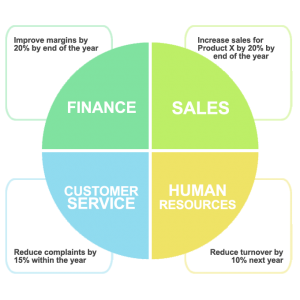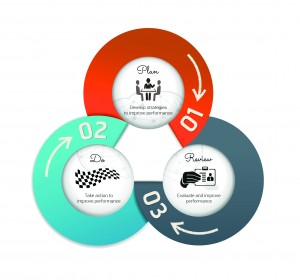6 Things Your Marketing Strategy Needs
“If you build it, they will come.”
There may have been a time in the ancient past where this saying had some truth to it – but times change. In the modern age any business wanting to carve out a place in the market needs a marketing strategy. And your marketing strategy can’t be just thrown together in one hurried hour; it needs to be clear, comprehensive, and able to stretch to cover whatever the market throws at it.
Sometimes a strategy needs the eyes of an expert to make it bulletproof. Get in touch with us for personalised support and advice.
1. Your Marketing Strategy Needs A USP
Short for “Unique Selling Point”, a USP is more or less exactly what it sounds like. As our blog piece on How to Create a USP explained, a clear and attractive USP is your greatest ally. Any effective marketing strategy will be built around your USP and your competitive advantages – if it isn’t, then in the eyes of any potential customer you’re just trying to sell the same thing as your competitors. Models like Porter’s Five Forces and SWOT analyses will help you understand the unique strengths and weaknesses of your business, your products or services, and your market. Use them.
2. Your Marketing Strategy Needs Clear Objectives
If you don’t know what you need to achieve, how can you achieve it? Get specific: “increase sales by 30% by the end of the year” is easier to measure and work toward than just “get more sales”.
A tool I’d recommend for this is the balanced scorecard. Developed in the 90s, the balanced scorecard is a way to break down your business’s big picture goals into simple, specific steps that can be taken by individuals or departments. A traditional scorecard is balanced across the business, with quantifiable objectives. The one we already mentioned, increasing sales by 30% by the end of the year, could be one objective. Another could be reducing complaints to customer service by 50% within the next year. A good way to organise these objectives is to sort them into a few categories, such as Marketing, Sales, Finance, HR and Operations, and any other categories that make sense for your company.
The reason it’s called a balanced scorecard is that despite the way these categories are named, each department still has a responsibility to deliver objectives across each category. For example in our example scorecard, the Finance department will obviously be putting in a big chunk of the work to hit any Finance-related targets, but that doesn’t mean they’re not helping out elsewhere. Your Finance department can push the business towards a key Sales target by helping with initiatives such as a “20% off your next order” campaign, or your Customer Service department might help you reach that target by upselling on the phone when talking to a happy customer.
Here at GMA, we have a client in the print industry who wanted to increase their revenue. We set a target with them to increase it by 20% in the next year. One of the most effective methods we used actually involved the customer service team. At that point, the team generally didn’t feel enthusiastic about upselling, and as a result rarely tried it, but together with the client we introduced a scheme to give the team a percentage of any extra sales made via upselling. That extra incentive was the boost the team needed, and when the client hit that target with a 20% increase in revenue that year, everybody was a winner – both the client’s company and their team.
3. Your Marketing Strategy Needs To Know Its Audience
If you try to market to everyone, you’ll end up attracting no one. Every business has a distinct audience, whether it’s affluent older people all over the UK, tech-savvy teenagers with a specific interest, or suppliers and retailers in a particular industry. Chances are you already have a pretty good idea of who your audience is. The mistake is to assume that the same marketing strategy will work for everyone: it won’t. Younger buyers, for example, are best reached online, and particularly through social media channels like Twitter and Instagram. Older buyers are more likely to engage with older marketing techniques, such as direct mail. Suppliers may already be sourcing their goods from a competitor of yours – so you will need a reason for them to sit up and take notice of what you have to offer (and if you’re struggling to think of a reason, it’s time to revisit no.1 on this list!).
It’s not just age that will change your strategy. There are the obvious things, like gender, location, and income bracket, but you can get ahead of your competitors by thinking about the less obvious elements. For example, are your audience primarily desk-based? Many organisations have firewalls which will block all incoming email from external organisations. That means you could have worked all week on a truly spectacular email campaign that you’re certain is going to knock their socks off, only to see it blocked by that company’s IT department. Save yourself the time and effort on strategies that won’t work by knowing who you’re marketing to.
B2B (business to business) marketing is not the same beast as B2C (business to consumer), so bear that in mind when writing your strategy. An effective B2B strategy will appeal to logic, return-on-investment and value, and reliability – after all, a good B2B relationship can often last years, even decades. Put the thinking in now, and you’ll thank yourself later.
4. Your Marketing Strategy Needs To Be Adaptable
Something may look great on paper, but in real life it just doesn’t go the way you thought it would. Let’s go back to that email campaign you worked all week on – this time it lands in everybody’s inboxes, but nobody’s interested. Don’t keep using it in the hope that one day it’ll get results. If it isn’t working, change it.
Use the Plan, Do, Review model on your strategy. Once you’ve finished planning and doing an email campaign, a social media campaign, a brochure, a special offer, or any other marking tactic you’ve used, come back to it and review it. Did you see results from it? And if you did, how did those results measure up to your original objectives?
5. Your Marketing Strategy Needs Expertise
In the past, marketing has been a side job given to someone in the IT department or someone in Sales, as an add-on to their usual duties. But if it’s going to be effective, your marketing needs to be more than just an afterthought. Marketing is a specialist industry, and one that has been capitalised on and used to major success by today’s most successful businesses.
Many companies simply don’t have the time to create and execute a truly compelling marketing strategy. Even companies with their own marketing manager may find that they need some ad-hoc assistance, particularly with areas which require a particular experience or tool, such as video marketing. That’s where we come in.
Marketing is our business. We have experts in our team who can develop and deliver a comprehensive, compelling marketing strategy, who can get sites to the top of Google, who understand the complicated world of social media and how to grow and engage a following, who can design and create a stunning and dynamic website, and who can write vibrant, attention-grabbing content for your website, blogs and emails. We understand how to create and refine a USP and how to use it to make an impact in the market.
Make sure your marketing assets are as good as they can be.
6. Your Marketing Strategy Needs To Be Measured By Its Success
Success is great, but you can make the most of it and keep the success coming by monitoring and measuring your successes when they happen. There are many tools we use, from dialler software that monitors and records calls to analytics software that tracks the visiting IP addresses of other businesses to your website. There are social media listening tools that show us who’s looking, listening and engaging with a post, and enable us to see when visitors and customers are most likely to be online. There are email marketing tools that allow us to see who’s clicked our links and what they’ve been looking at.
The Plan, Do, Review model doesn’t have to be just for the things that haven’t worked. It can be used for your successes too! Have you measured a lot of success with your telemarketing? Keep using it, and maybe even increase it! Have you seen unexpected growth from your social media campaigns? That’s a sign you want to look into giving social media more attention. Take notice of your successes – and then take advantage of them.
These six elements are not everything your marketing strategy needs, but they are perhaps the most crucial parts. Master these six elements – either by yourself or with the help of an outsourced marketing company like GMA – and you’ll be looking at the beginnings of a successful strategy.
Get expert help with your marketing strategy from GMA for more leads, more profit and more success.



